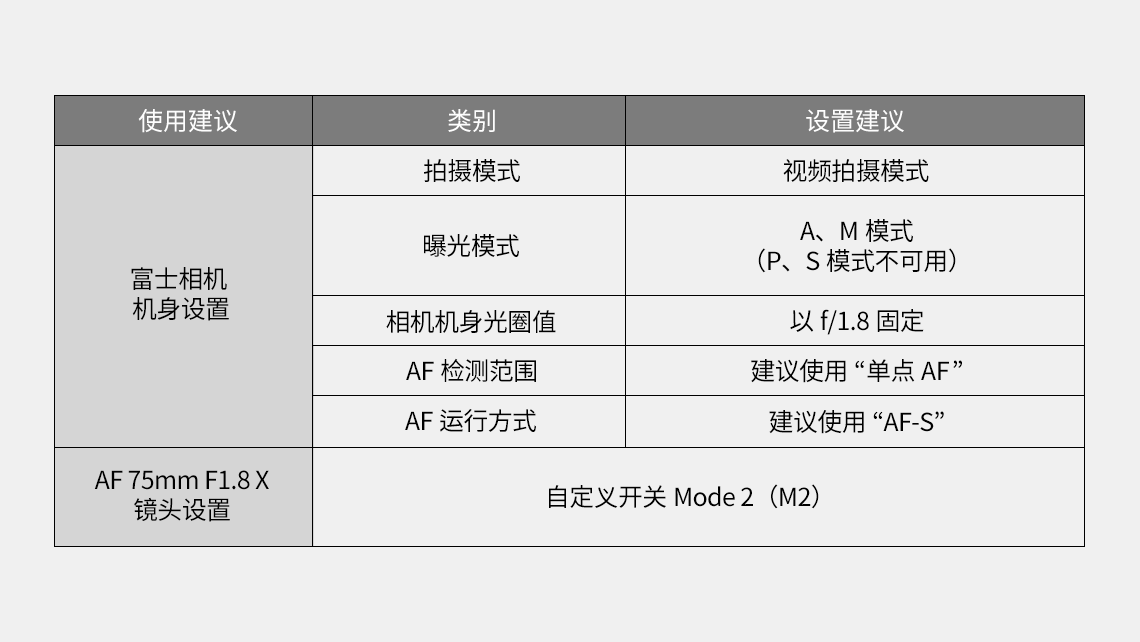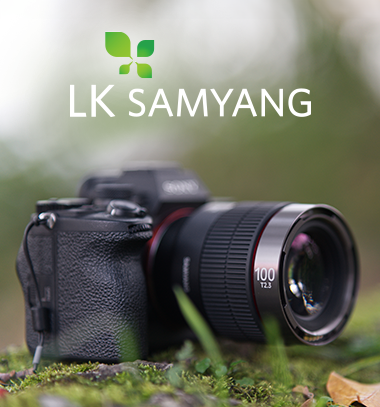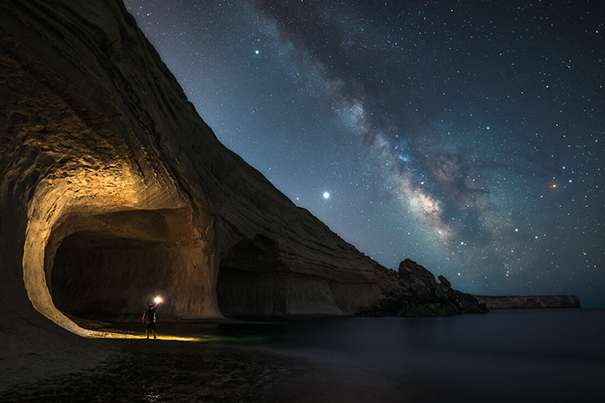BLOG
The Attractive 14mm Option for Landscape and Astro photographers
I have owned the original Samyang
14mm F2.8 ED AS IF UMC ultra wide-angle lens for a few years,
and recently got my hands on the MK2 version of this lens.
I loved the first version of the lens and was eager to test out the new and improved version. Samyang market this lens as ‘Classics Evolved’, and have introduced 2 very
important features which the original lens lacked, these are weather sealing and the opportunity to lock the focus ring.
This lens is particularly popular with both Astro and Landscape photographers due to its wide angle of view and wide aperture, but most of all, because of its great value
for money. This is not a fancy lens, in fact, it is a fully manual lens, meaning it has an aperture ring and can only be focussed manually, but this is not a problem for either
Astro or Landscape Photography. However, the feature that matters most for most ultra wide-angle photography, image sharpness, is there and the very affordable price
makes this lens a very attractive option for landscape and Astro photographers.
Specs:
· Aperture Range: F2.8 - F22
· Construction: 14 Elements in 10 Groups (3 High Refractive Elements, 1 Hybrid Aspherical Element, 1 Aspherical Element and 2 Extra-Low Distortion Elements).
· Coating: UMC
· Minimal Focussing Distance: 0.9 Feet (0.28 Meters)
· Magnification Ratio: x0.08
· Diaphragm Blades: 9
· Filter Size: N/A (No Filter thread available)
· Angle of View (Nikon FX): 115.7˚
· Angle of View (Nikon DX): 93.9˚
· Maximum Diameter: 87.0mm
· Length: 96.3mm
· Weight: 641 Grams
Focal Length
This lens is a prime lens, meaning it has a fixed focal length.
The focal length is 14mm, which equates to an angle of view of an impressive
115.7˚, allowing the user to include a huge amount in their frame. This lens is
not to be confused with a fisheye lens, as this is a rectilinear lens, meaning it
yields images where straight features, such as the walls of buildings, appear
with straight lines, as opposed to being curved. In other words, it is a lens
with little or no barrel or pincushion distortion.
Ultra-wide-angle lenses (Short Focal lengths) can capture a huge scene in a
single frame, however, ulta-wide-angle lenses are popular because of the
way their distortion can be used to the photographers advantage, either
making foreground subjects appear larger or skewing mountains in the
background to make them seem taller. Wide angle lenses are almost surreal
and help the viewer feel encapsulated by the image. It almost feels like you
are there in the scene.
Ultra-wide-angle lenses such as the Samyang 14mm F2.8 are ideal for
landscapes, astrophotography, cityscapes, architecture and interiors.
The 14mm focal length gives an interesting perspective as it is much wider
than can be seen with the human eye (Which is estimated to be roughly
22mm).
Aperture
The maximum aperture of this lens is F2.8, there aren’t many other options
for lenses this wide with an aperture of F2.8, and the few options that exist
are significantly more expensive.
An F/2.8 aperture is ideal for astrophotography, where allowing as much light
as possible to hit the camera sensor is a priority. An Aperture of F2.8
compared to F4 means that a lower ISO setting can be used, helping reduce
noise in the resulting image (Example – If at F4 an ISO of 6400 is required to
get the correct exposure, then at F2.8, an ISO of 3200 would give the same
exposure, but at a lower ISO and therefore with less noise in the image).
When using a wide-angle focal length, subjects tend to be smaller in the
frame (especially background subjects) and any motion across the frame is
therefore slower, this is particularly important in astrophotography where
the rotation of the earth can cause the stars to become elongated and trail.
Due to the lack of electronics and communication with the camera, this lens
is best used in with manual mode in the camera, as using aperture or shutter
speed priority does not give accurate results.
Image Quality
One of the most important parameters for any lens is it’s sharpness, the term commonly used to describe how much detail / contrast a lens can resolve.
This lens is slightly soft in the corners when shooting at F2.8, however it improves significantly as you stop down to F4 and F5.6. By F8, the lens is incredibly sharp across
the frame, making it ideal for landscapes. Sharpness is also great at F11, but by F16 and F22, diffraction starts to have an impact and reduces the crispness of the image.
When shooting landscapes, I am most interested in the sharpness in the corners of the frame, as this tends to be a weak spot for most lenses. For this reason,
when shooting landscapes, I stop down to F8 or F11. At these apertures, this lens performs superbly across the entire frame.
All lenses / optics have some forms of distortion and aberrations, these tend to be most pronounced when a lens is shot wide open (In this case, at F2.8) and in the corners
of the frame. The Samyang 14mm F2.8 MK2 displays some coma and astigmatism, but not much. The coma and astigmatism are less of an issue when shooting landscapes
than they are for Astrophotography, where stars need to be pin point and round. I have found the best results for Astro shot at an Aperture of F4. When tracking,
I even stop down further to F5.6 and get some great results.
The Samyang 14mm F2.8 MK2 does lead to some vignetting, but this is nothing that can’t be fixed in post processing.
The bulbous front element results in some minor flares when shooting directly into the sun, these can sometimes by managed by blending frames together or cloning out
unwanted flares, but its best to try to avoid these to begin with when picking a composition.
The biggest optical weakness of this lens is the radial distortion, also know as ‘Moustache Distortion’, this means that flat lines across the frame (Such as a horizon line)
become wavy. This might be worrying at first, however it is easily correctable in Lightroom using profile corrections, and in the worst of cases, can be manually correct in
Photoshop using the warp tool.
Sunstars
Like its predecessor,
the Samyang 14mm F2.8 MK2
renders beautiful sunstars,
especially when stopped
down to F16 - F22.
Aperture Ring
This is a manual aperture lens,
meaning the aperture is controlled
by rotating the aperture ring,
which is the ring located nearest
to the lens mount.
The aperture cannot be changed in camera, and this is another reason why
this lens is so affordable, as there is no complex electronic aperture control
mechanism built into the lens. The aperture ring is also marked with each
stop from F2.8 upto to F22. The ring has deep grooves which make it easy to
rotate, even whilst wearing gloves or in cold weather.
The aperture ring can be set to either ‘click’ in half stop increments, or to
smoothly rotate across the range using the new Aperture Click ring which
has two options, ‘Free’ and ‘Click’. I have found the ‘Click’ setting much
better than the ‘Free’ setting as it is much easier to calculate by how many
stops I am changing the aperture without looking at the lens when working
quickly with changing light conditions.
Focus Ring
This is a manual focus lens, which is another reason that Samyang have managed to keep this lens so lightweight, compact and affordable. Not including an autofocus
motor means the design and construction of the lens are simplified significantly. Some people may struggle to adjust to a manual focus lens, however I have always used
manual focus when shooting landscapes and astrophotography, even with my autofocus Nikon lenses, to ensure I nail critical focus, so this is second nature to me.
Having a lens which can only be focused manually is not really an issue on a lens with such a wide angle, simply because of the impressive depth of field, meaning that
in most cases, everything in the frame that is more than a few feet away will be in focus .
Zooming in to the screen on Live View is the best way to focus this lens, both at night, by finding a bright star or distant light source, or during the day, finding an area of
high contrast / detail in the frame. I have not tried focusing whilst looking through the view finder as the low magnification means it’s hard to discern detail and find
critical focus.
The focus ring has a long throw, roughly 90 of rotation from nearest focus (0.28M) to infinity, this makes it easy to smoothly find the exact point of focus. On the Samyang
14mm F2.8 ED AS IF UMC MK2, Samyang have introduced a lock for the focus ring, this is particularly useful when the user wants to ensure that they do not accidentally
bump the focus ring half way through capturing the frames, such as when shooting a star trail over several hours.
The focus ring’s rotation is silky smooth, it is very nicely damped and has no play, there are hard stops at both the minimum focus distance and at infinity. Focus distance
markers are printed in bold on the focus ring in feet (Yellow) and meters (White).
Focus Stacking
Objects in frame do not change size significantly as the focus point changes, this is particularly useful when focus stacking images as it makes it easier to merge them in
post processing.
I frequently use focus stacking when I am super close to my foreground (Less than 30cm) and want a tack sharp image from front to back.
Build Quality & Features
The MK1 version of the lens was
well built, it was solid and
didn’t feel cheap at all.
The MK2 version however, is leaps and bounds ahead of the MK1 in terms of
build quality, handling and also aesthetics. The new design looks more
professional, the controls are smoother and feel much more reassuring.
The Samyang 14mm F2.8 ED AS IF UMC MK2 is bulkier than the original
version and also slightly heavier (640 grams Vs 530 grams).
The lens is solid and well balanced on my Nikon D810, it also feels great in the hand.
The majority of the lens is made of metal, apart from the lens hood, which is made of high quality plastic. The focus ring is made of metal, covers most of the lens barrel
and has a rubber grip making it easy to use, even whilst wearing gloves.
The alignment mark for mounting this lens to Nikon bodies is an orange dot on the mount, this also lines up with both the focus marker and aperture marker on the lens
barrel, which is really handy when changing lenses at night.
The huge front element and lack of a threaded ring mean that regular filters systems cannot be used on this lens without a special adaptor, such as the Haida or Nisi kits
which use 150mm filters.
One of my main concerns with the original lens was possibility of scratching the bulbous front element of the lens, however the built-in lens hood (Not removable) offers
a high level of protection and the special lens cap which is included with the lens ensures that this front element is well protected. This lens cap clips to the inside of the
hood, ensuring it locks safely in place.
Price and Value
The single factor which makes the Samyang 14mm f/2.8 Lens so popular with
photographers is its price. From recently checking prices online, you can easily
buy 4 or 5 of these lenses for the price of just one Nikon 14mm f/2.8.
The bottom line is that the Samyang 14mm F2.8 is a great value lens for
anyone not willing to spend the premium price of more expensive lenses from
other manufacturers.
The Samyang 14mm f/2.8 Lens is available for most major mounts, including
Nikon, Sony, Canon and Pentax.
Pros
· Ultra-wide-angle lens
· Smooth Focus and aperture Ring
· Focus Lock function
· Aperture click function
· Great build quality
· Weather sealed for use in inclement conditions
· Great sharpness when stopped down
Cons
· Barrel and Radial Distortion (Moustache Distortion)
· Coma and Astigmatism when shooting wide open
· Filter systems are specific to this lens and relatively expensive
Summary
Most photographers would not
consider a 14mm lens as their most
used lens, especially since this is a
prime lens.
That being said, I have thoroughly enjoyed using this lens as it has produced
some fantastic images and it will continue to have a permanent place
in my bag.
The simplicity of this lens means that it is reliable and there is very little that
can go wrong it.
Whilst I have tried to cover all my experiences using this lens so far, it’s hard
to describe just how much I have enjoyed using this lens and being able to
capture some of my favourite images with it. The image quality from a lens
which is so well priced is truly exciting, and shows that third party lenses are
to be considered as a serious option by photographers nowadays.
I have not seen any noticeable improvement in Image quality between the
Mk1 and MK2 lenses, that being said, the MK2’s new features of weather
sealing and focus lock make it much better than the original version.
Disclaimer
Samyang sent this lens to me for free to use and review, I am not being paid
by Samyang to write this review, and therefore this review is purely based on
my experience using the lens over the past 7 months, and how I have found it
compared to the Mk1 version which I purchased a few years ago.
When reviewing products I always aim to be objective and honest.
Through use and testing, I will provide my feedback to Samyang on how I
believe they can improve their future products.
I have tried my best to be impartial and unbiased in this review.
I review gear as impartially as I can – When looking to buy a new product,
I do loads of research and look at reviews. It is vital that the reviews are
genuine and impartial, the last thing I would want is for someone to waste
their hard-earned cash on something which will not give them the best value
in return
The brands I partner with are the brands that I would spend my money on –
I would never recommend a product for the sake of it, if I don’t find it suitable
to my workflow or it doesn’t perform as I expected, I would not recommend it.





 14mm
14mm -
-
 F11
F11
 1/6sec
1/6sec
 64
64
 -
-
 -
-
 -
-
 -
-



 14mm
14mm -
-
 F8
F8
 1sec
1sec
 64
64
 -
-
 -
-
 -
-
 -
-
























